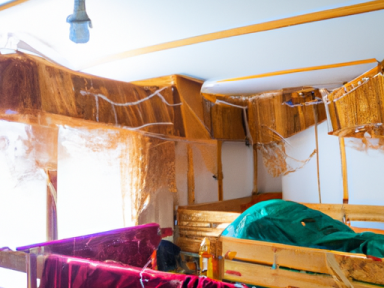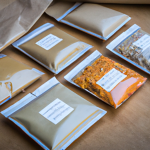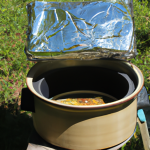As the weather gets colder and the cost of heating our homes continues to rise, it’s important to explore methods of creating DIY thermal insulation to retain heat during the cold spells. By using readily available materials and a bit of ingenuity, you can significantly reduce your heating bills and stay warm even in the harshest winter months.
1. Insulating Windows and Doors
Windows and doors are the primary culprits when it comes to heat loss in our homes. One of the easiest and most effective ways to combat this is by using weatherstripping. Weatherstripping involves sealing any gaps around your windows and doors to prevent cold air from seeping in and warm air from escaping.
You can find weatherstripping kits at your local hardware store or simply use self-adhesive foam strips to seal gaps. Make sure to also apply a door sweep to the bottom of exterior doors to prevent drafts.
2. Bubble Wrap Window Insulation
If you’re looking for a low-cost solution to insulate your windows, consider using bubble wrap. Cut the bubble wrap to fit the size of your window and spray a thin layer of water on the glass to make it stick. Press the bubble wrap onto the glass, ensuring that the bubbles face inward. The trapped air acts as an insulator, preventing heat loss.
This method is especially useful for single-pane windows or those that are poorly insulated. It’s a simple yet effective way to create a thermal barrier and keep your home warm during the winter months.
3. Insulating Attics and Crawlspace
A significant amount of heat can escape through uninsulated attics and crawlspaces. By insulating these areas, you can save a considerable amount of energy and keep the warm air inside your living space.
For attics, consider using fiberglass insulation batts or blown-in insulation. Ensure that the insulation covers the entire surface, paying extra attention to any gaps or seams.
For crawlspaces, use rigid foam insulation boards to cover the walls and floor. This will create a barrier against the cold ground and prevent heat loss through the foundation of your home.
4. Improving Wall Insulation
If you have access to the walls of your home, it’s worth considering adding insulation to improve its thermal efficiency. This is particularly valuable for older homes that may have inadequate or outdated insulation.
There are a few different methods you can use to insulate walls, including blown-in insulation, foam insulation, or DIY insulation panels. Each method has its pros and cons, so be sure to do your research and choose the best option for your situation.
5. Using Insulated Curtains
Another simple and affordable way to create thermal insulation in your home is by using insulated curtains. These curtains are specifically designed to retain heat and block cold drafts from entering your living space.
The insulation layer in these curtains helps to prevent heat loss through the windows, keeping your rooms cozy and warm. During the day, open the curtains to allow the sunlight in and close them at night to provide an additional layer of insulation.
Implementing these DIY thermal insulation methods will not only save you money on heating costs but also make your home more comfortable during the winter. By taking proactive steps to retain heat, you’ll be better prepared for cold spells and ensure the well-being of you and your loved ones.




GIPHY App Key not set. Please check settings